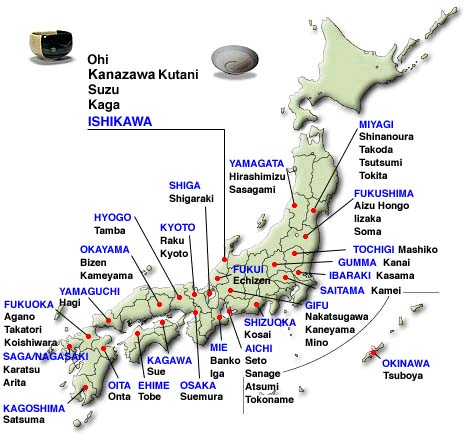
Japanese ceramics has a long history stretching over 12,000 years. The land of Japan is abundantly supplied with the raw material for ceramics and an appreciation for clay and its multitude of possible uses has been a steady force in Japanese culture.
In ceramics the Japanese especially admire accidental effects that resemble natural forms. Objects that appear mishapen and glazes that exhibit what would normally be regarded as serious imperfections in the West are admired by the Japanese connoisseur. The Japanese potter liked his work to reveal the imprint of the hand that had made it. Marks, such as the ridges left by the fingers in a newly thrown vessel, were frequently accentuated instead of being obliterated, and marks made by tools were often left untouched.
The Japanese affection for ceramic ware extends beyond shape, design, and color to include touch. Japanese tea bowls, for example, are made without handles, so as to be cradled in the palm. They are valued for their heat-retention. Tea ceremony is always concluded with a discussion and appreciation of the qualities of the utensils.

Click here and we would like to take you
to the refined world of Ohi.

Click here and we would like to take you
to the refined world of Kanazawa Kutani.



